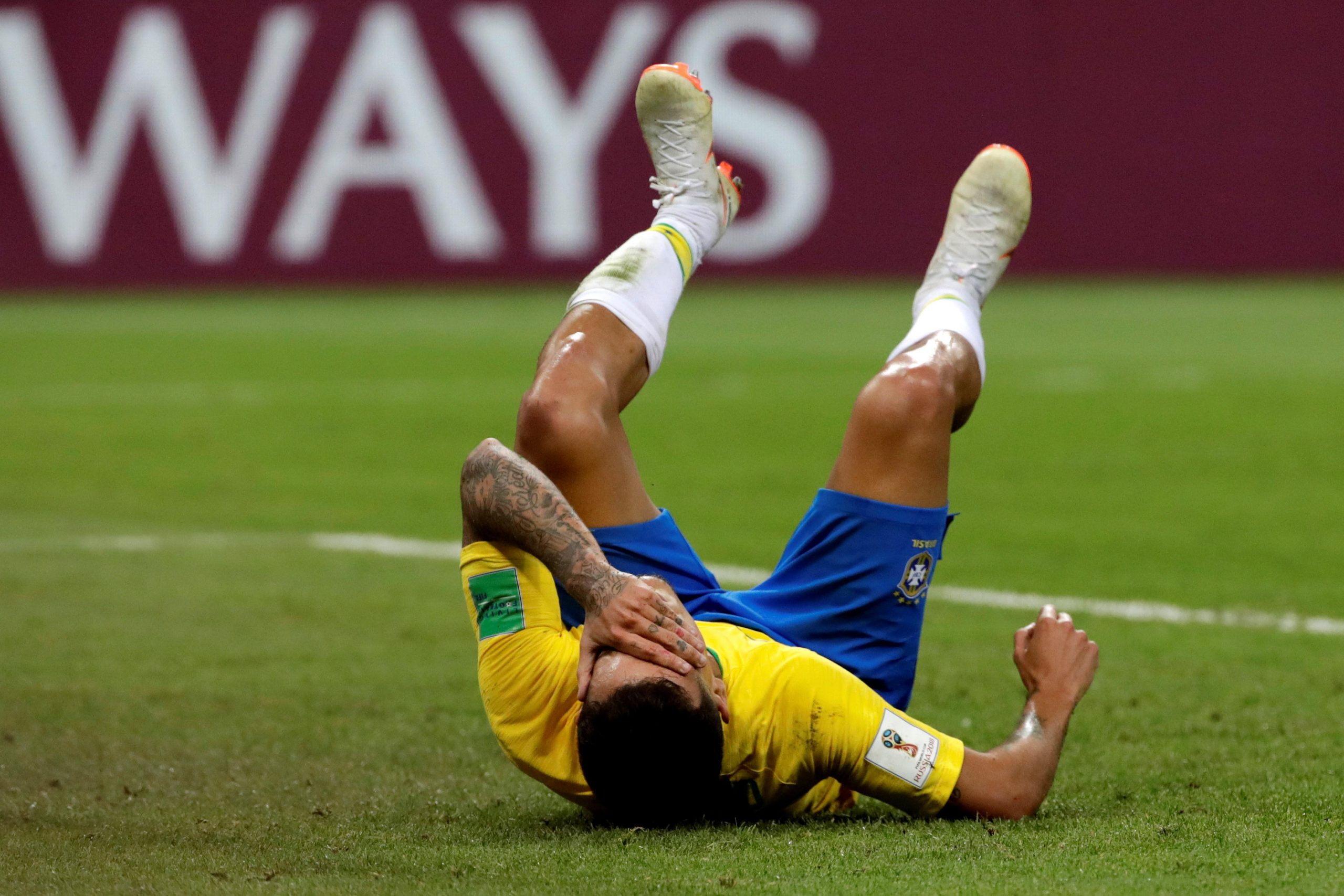In a World Cup where chaos has reigned supreme, Brazil seemed to be the team to beat in the competition. They combined defensive solidarity with attacking verve in a way that no one else did. Brazil had been good throughout the competition and were favored to get past Belgium in what was the glamour tie of the quarterfinals.
And yet here we are, with Brazil going out in the quarterfinals for the 3rd time in the last four World Cups. On the surface, Brazil’s attack did what it had done throughout the entire tournament: lots of shots with locations that were just good enough not to actively complained about. They took 27 shots with 16 in the penalty box and had a few good scoring chances mixed in. It's true that Brazil’s shot totals were juiced up by playing from a losing position for over 80 minutes, particularly at a -2 game state, but the degree to which they piled it on was still staggering.
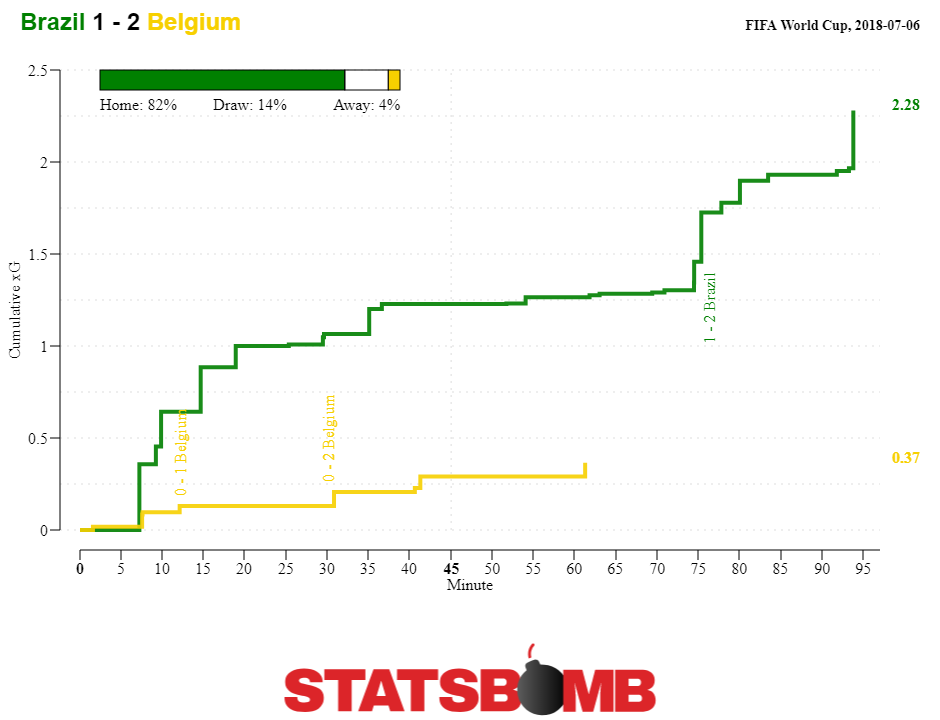
Score effects, or game states, are nothing new. They are one of the bedrocks of the early analytics movement within football as well as elsewhere in different sports. The crux is that teams, for whatever reason, behave differently depending on the scoreline. Losing teams get desperate and become prone to settling for bad shots while the team ahead can tend to form a defensive shell. Football matches consist of a set of different mini matches all jumbled into 90 minutes of play. Something similar happened to Brazil. The calm approach they started with slowly but surely turned more chaotic as time slipped away.
The modus operandi of Brazil was control through possession. Whenever Joao Miranda or Thiago Silva had the ball, multiple teammates dropped deep to present themselves as a passing option. At times, even the wide forwards like Neymar or Willian would come back to receive the ball. The goal was creating passing triangles all over the pitch and good connections overall, in order to make it easy to progress play into more dangerous areas.
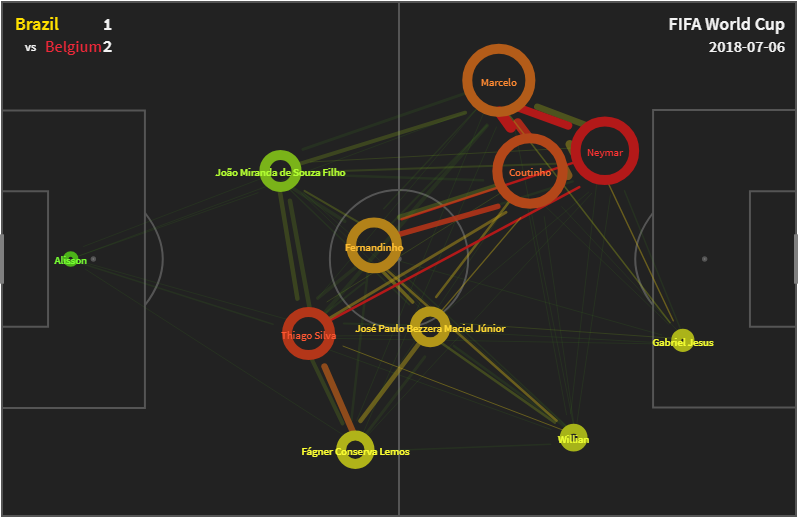
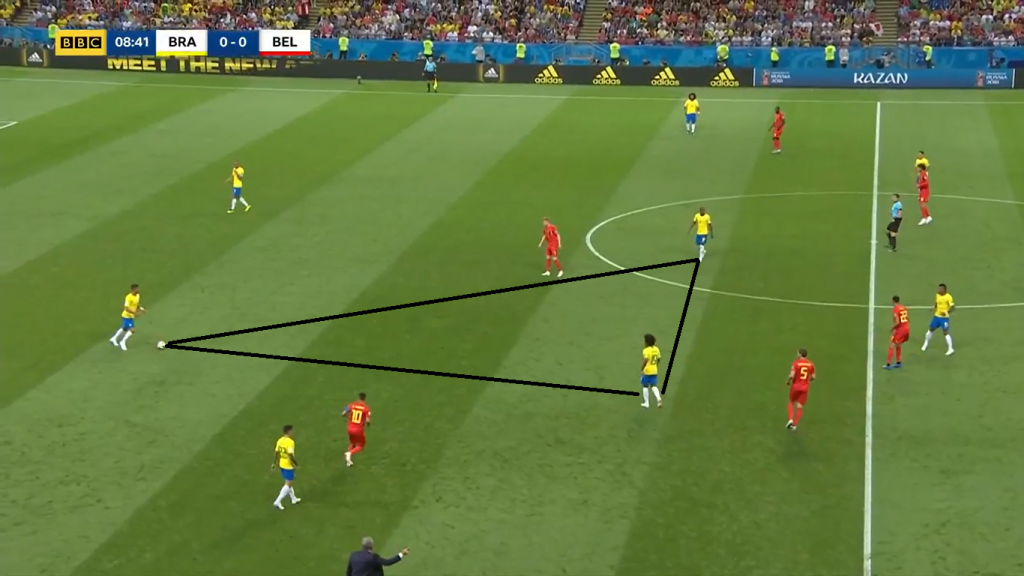
Brazil had their chances when it was 0–0, with two of their better ones in the entire match coming from corner routines, both of which involved Miranda making a cut to the near post and executing a flick on for a teammate. Once Fernandinho headed the ball into his own net from a corner to put Brazil behind, the left sided dominant attack that had become a staple of Brazil’s gameplan during the tournament became more prominant. The trio of Marcelo, Coutinho and Neymar were in close proximity to each other in the attacking third, constantly switching positions to try and find cracks in the defense with one of the three always maintaining width along the sidelines. One of the key themes in the 2018 World Cup has been the prevalence of lopsided attacks. The key is to be able to take advantages of switches of play when the opposition potentially loses some compactness in their shape. Against Peru, France had a lot of their players situated on the left side which Kylian Mbappe isolated on the right wing waiting for the chance to be isolated against a single defender.
The same thing happened for Brazil on numerous occasions when they were trailing in the first half, with switches of play onto the right side for Willian. The problem with that is for all the good things Willian brings to the table, he’s not the kind of play that scares you off the dribble in isolated situations. All of this equated to moments during the first half when Willian was whipping crosses in from the right to no avail.
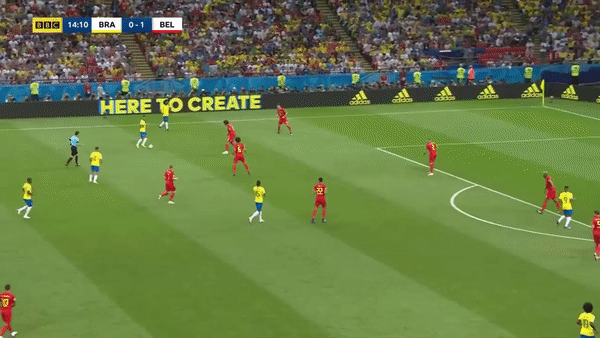
While Gabriel Jesus was quite isolated while the ball was mostly on the left side, his movement into the penalty box was important in making sure that there was another player that had to be accounted for. His two shots came from little shifty off-ball moves in the penalty area. Douglas Costa came on in the second half and occupied the right wing, with Roberto Firmino playing the central position in place of Jesus. Firmino’s inclusion meant that Paulinho was able to make more penalty box runs and give Brazil multiple threats to deal with inside the area. The second half was quite interesting, as Brazil poured in 15 shots in total with a lot of them coming from inefficient areas. It was the picture perfect example of what happens when a team is pressing up against time from a losing situation, as there were more instances of freelancing with Neymar picking the ball up at the halfway line and trying to do things himself. Between the 51st and 74th minute, Brazil attempted 8 shots and only one of them was a halfway decent opportunity, a rebound attempt from Neymar. Here’s a quick summary:
- Coutinho took two typical Coutinho shots, cutting into the middle and shooting from ~20 yards. Both of them were blocked.
- Paulinho shot from a tough angle just to the right of the 6 yard box after making a run from the right wing.
- Douglas Costa had four shots: two from the right half space outside the penalty area and two shots from the wide areas in the box.
Brazil eventually broke through and showed the benefits of having a bunch of players near each other as well as having midfielders who can make runs into the box. There were four players within relatively close proximity of each other as Coutinho brought up the ball with Marouane Fellaini guarding him. Firmino’s position means Vincent Kompany has to keep tabs on him, while both Axel Witzel and Toby Alderweireld are ball watching. Combine all of this with Thomas Meunier being just a bit too wide and it creates a gap for Renato Augusto to run into for a potential lob pass, which Coutinho expertly does.
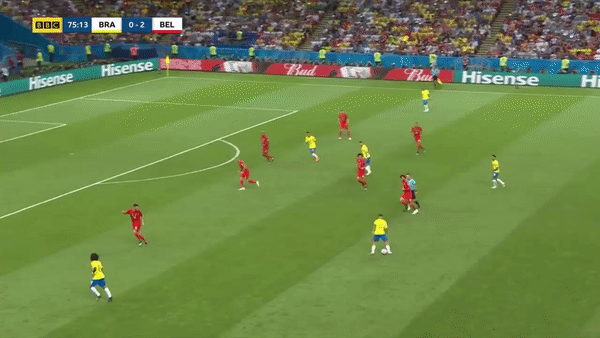
The same thing nearly happened just a few minutes later. Kompany failed in his attempt to hit Fellaini with an out ball to relieve Belgium of some pressure, which led to a semi transition opportunity off of Marcelo’s first time pass to Coutinho. Nacer Chadli’s position is near midfield which means he can’t catch up to Augusto which makes it a 5v4 advantage with Neymar and Costa occupying the attention of their markers. Kompany has to pay attention to Firmino and it leads to Augusto having a run up on his shot which goes wide.
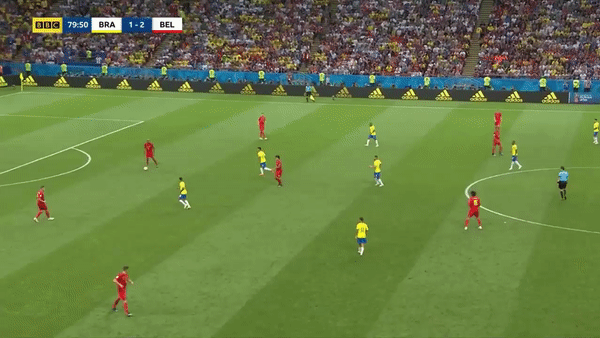
That was basically it for Brazil, outside of the half chance from Firmino from a corner kick in the 93rd minute. It was an odd match, one in which if you ran simulations based purely on the shots taken, there were many more scenarios in which Brazil come out on top than Belgium. Of course that’s not completely fair because the scoreline does dictate behavior of teams so who knows how Belgium would've acted at 2-2, but looking through the tape and there was enough to suggest that Brazil probably did get unlucky overall and would've had enough to finish the job.
Brazil were good during this entire tournament and were largely good against Belgium, even if their shot and xG numbers in the aggregate perhaps overrated what they did. Their 27 shots were helped by playing at a -2 game state for as long as they did, but the left sided dominant attack did its job even in helping progress play into the final third and the close calls they had when the game was tied. If anything, Brazil will probably wish they could’ve had Douglas Costa in place of Willian for the full 90 minutes as his dynamism would've made their switches of play considerably more dangerous.
Sadly for fans of the Brazil national team, this will probably be the last World Cup with Neymar at the peak of his powers. Gabriel Jesus projects to be a star when he hits his peak and the likes of David Neres and Malcom offer promise for Brazil in the wide areas, but they don’t come close to replicating the same overall value that Neymar brought. In addition, players like Coutinho, Firmino, Marcelo and others will probably be at a different stage of their careers when 2022 rolls around. While the pipeline coming up has some gems, it could be that for a number of reasons, this was Brazil’s best chance at winning their first world Cup since 2002 and they came up short. Brazil were a good team that did a number of things right in the 2018 World Cup, but football is a cruel sport and sometimes things just don’t go your way.
Header image courtesy of the Press Association
